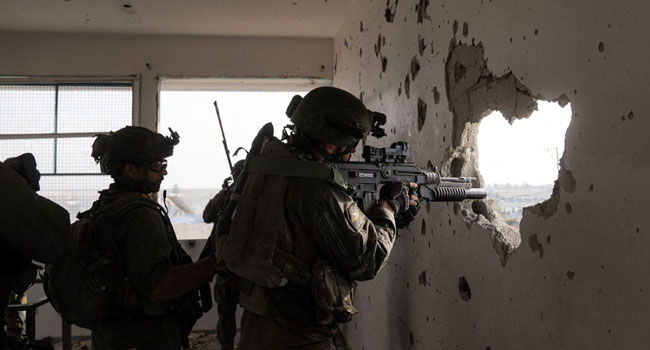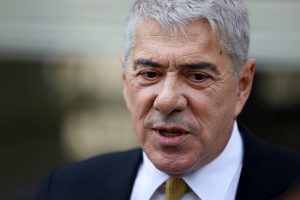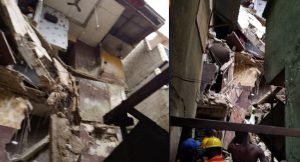
Israel renewed its bombardment of the Gaza Strip Tuesday, after its key military backer the United States renewed its criticism of its ally over the high civilian casualty toll of the war.
Residents told AFP of Israeli warplanes striking central Gaza and artillery fire hitting the territory’s south, while medics said they pulled multiple bodies from the rubble of the latest bombardment.
Hours earlier, US Secretary of State Antony Blinken told two top Israeli officials that casualties among Palestinian civilians “still remain unacceptably high”.
“We continue to see far too many civilians killed in this conflict,” spokesman Matthew Miller said after Blinken meth Strategic Affairs Minister Ron Dermer and National Security Adviser Tzachi Hanegbi.
Washington has been pushing for a truce between Israel and Hamas.
But Hamas political leader Ismail Haniyeh said Sunday that the group was pulling out of indirect talks for a deal in protest at recent Israeli “massacres”, including a massive strike on Sunday that the health ministry in Hamas-run Gaza said killed at least 92 people.
Haniyeh said Hamas stood ready to return to the indirect talks once Israel “demonstrates seriousness in reaching a ceasefire agreement and a prisoner exchange deal”.
After the latest deadly strikes, medics from the Palestinian Red Crescent said they recovered four bodies from a house outside the southern city of Khan Yunis and another from Nuseirat camp in the central Gaza.
The Israeli military said that over the previous 24 hours its air force struck “approximately 40 terror targets” in Gaza. They included “sniping posts, observation posts, Hamas military structures, terror infrastructure, and buildings rigged with explosives”.
It said its troops were also continuing targeted raids in the far-southern city of Rafah and in the central Gaza Strip.
Prisoner abuse allegations
The war began with Hamas’s unprecedented October 7 attack on Israel which resulted in the deaths of 1,195 people, mostly civilians, according to an AFP tally based on Israeli figures.
The militants also seized 251 hostages, 116 of whom are still in Gaza including 42 the Israeli military says are dead.
Israel responded with a military offensive that has killed at least 38,664 people, also mostly civilians, according to figures from the Gaza health ministry.
The Israeli military has also rounded up scores of Gazans, who have made allegations of torture, rape and other abuse in custody that Israeli authorities have denied.
Palestinian lawyer Khaled Mahajna said Monday that prisoners had recounted guards using “electric prods” on inmates’ bodies.
In the case of one prisoner, a “fire extinguisher tube was inserted into his buttocks and the fire extinguisher was turned on,” Mahajna said after visiting detained Palestinian journalists.
The lawyer said prisoners were handcuffed when they ate the meagre meals provided, while detainees reported widespread disease and untreated wounds.
Five Israeli human rights groups have gone to court over conditions at the Sde Teiman desert camp where Gazans are being held. Israeli officials insist they act within international law.
Mass displacement
Indirect talks on ending the devastating war have been brokered by Qatar and Egypt, with US support, but months of negotiations have failed to bring a breakthrough.
At the end of May, US President Joe Biden outlined a ceasefire roadmap he said had been drawn up by Israel that triggered an intensification of the talks.
But despite meetings in both Cairo and Doha, there has been no sign of progress on how the roadmap might be implemented.
Critics in Israel, including tens of thousands of demonstrators who have marched to demand a deal to bring home the hostages, have accused Prime Minister Benjamin Netanyahu of prolonging the war.
The war has forced 90 percent of Gaza’s 2.4 million people to flee their homes. Many of have sought refuge in UN-run schools, six of which have been hit by Israeli strikes since July 6.
There have also been near-daily exchanges of fire between Israeli forces and Lebanon’s Iran-backed Hezbollah movement, a Hamas ally.
On Monday, a Hezbollah fighter and his sister were killed in an Israeli strike on the south Lebanon town of Bint Jbeil, Hezbollah and the state-run National News Agency said.
Israel said its strike hit a Hezbollah arms depot.
AFP


















+ There are no comments
Add yours